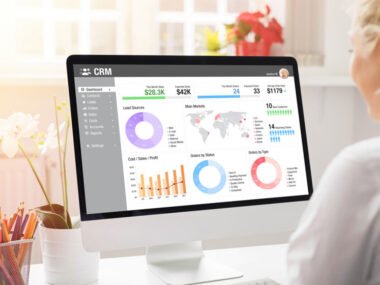Ransomware attacks have become one of the most significant cybersecurity threats facing businesses today. These malicious attacks involve cybercriminals encrypting your company’s critical data and demanding payment, often in cryptocurrency, to restore access. The consequences of a hacker can be devastating, including financial losses, reputational damage, and prolonged downtime. However, with proactive measures and a solid defense strategy, you can significantly reduce the risk of falling victim to ransomware.
Understanding Ransomware
Ransomware is a type of malicious software designed to block access to systems or files until a financial gain is paid. Cybercriminals typically spread programming through phishing emails, malicious attachments, or vulnerable remote desktop connections. Once executed, ransomware encrypts files, locking users out of their systems. Any computer security company would tell you that paying the demanded fee does not guarantee recovery, as these criminals may not provide the decryption key or may ask for additional payments.
Essential Steps to Protect Your Business from Ransomware
Employee Training and Awareness
The most common entry point for ransomware is human error, often through phishing emails or unsafe downloads. Regular cybersecurity training is essential to educate employees on identifying suspicious emails, avoiding malicious links, and following safe online practices. Awareness campaigns should emphasize verifying unexpected attachments and being cautious with email communications.
Implement Robust Backup Solutions
Regular, encrypted backups are your strongest line of defense against ransomware. Ensure backups are performed frequently and stored in offline or air-gapped environments. This prevents hackers from accessing and encrypting backup files, allowing you to restore your data without paying any money.
Use Multi-Factor Authentication (MFA)
MFA adds an extra layer of security by requiring users to verify their identity through multiple steps before gaining access. Even if attackers obtain login credentials, MFA can prevent unauthorized access to systems and sensitive data.
Keep Systems and Software Updated
Outdated software and operating systems are prime targets for ransomware attacks. Regularly apply security patches and updates to eliminate vulnerabilities that cybercriminals may exploit. Automated patch management tools can help streamline this process.
Restrict User Access and Privileges
Implement the principle of least privilege (PoLP), ensuring employees only have access to the data and systems necessary for their roles. Restrict administrative privileges to reduce the attack surface and limit the damage caused by ransomware.
Deploy Advanced Security Tools
Use antivirus software, endpoint detection and response (EDR) systems, and firewalls to detect and prevent ransomware attacks. These tools provide real-time monitoring and threat intelligence, helping identify suspicious activity before it escalates.
Have an Incident Response Plan (IRP)
A well-documented incident response plan prepares your team to act quickly if a ransomware attack occurs. The plan should outline steps for containment, eradication, and recovery, along with communication protocols for notifying stakeholders.
Who Should Create a Ransomware Protection Guide?
Any organization that relies on digital systems and stores sensitive information should prioritize creating a ransomware protection guide. This includes businesses in industries such as finance, healthcare, retail, education, manufacturing, and government sectors, where data security is paramount.
Small and medium-sized enterprises (SMEs) are often targeted because they may lack robust cybersecurity infrastructure, while larger corporations face risks due to their extensive digital footprints. Companies handling customer payment information, intellectual property, or proprietary data are especially vulnerable to attacks.
A well-crafted protection guide ensures that these organizations have clear protocols in place to prevent attacks, respond efficiently, and recover swiftly, minimizing both financial and reputational damage.
What to Do if You’re Hit by Ransomware
Despite preventive measures, ransomware attacks can still occur. If your company becomes a victim:
- Isolate infected systems immediately to prevent the ransomware from spreading.
- Report the incident to relevant authorities or cybersecurity experts.
- Avoid paying the fee, as it doesn’t guarantee data recovery and may fund further cybercrime.
- Restore systems from secure backups if available.
Work with a Computer Security Company
Ransomware attacks pose a serious threat, but they are not unbeatable. By prioritizing employee training, maintaining up-to-date systems, implementing strong access controls, and having a solid incident response plan in place, your organization can build a resilient defense against threats. Cybersecurity is not a one-time effort but an ongoing commitment to safeguarding your business, employees, and customers from modern threats.










